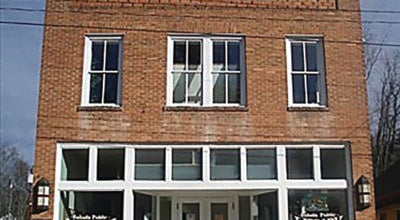A meadow in the Ruhr Valley, late spring 1945
Published 8:34 am Friday, February 18, 2011
‘Life in the Army,’ by Holland Brady
The American soldiers of course did not realize that they were approaching the last few weeks of combat against the German army, although several days of vicious fighting still remained. This day, they were face to face in close opposition in an attractive farming area. The meadow was only about 100 yards across, defined at the right side by a row of houses spaced, for a German village, rather widely apart. Containing this group of houses was a dense hedge somewhat more than head high; next to the left side ran a faintly discernible trail alongside a trickle of a stream (or so a straggle of bushes seemed to suggest). The field itself was a fairly level but rough area of grass interrupted by only one fairly large bush with a collar of taller and more heavily bladed grass round about it. The bush was just more than halfway across and somewhat closer to the left edge of the field. Facing the American troops from the opposite side of the grassy enclosure was an embankment, perhaps 25 feet high or less, running from right to left and out of sight in each direction bearing along its crest a superhighway known to the Germans as an “autobahn.” This berm was roughly interrupted only as it arched upwards across the little stream and its adjacent rough path.
American intelligence had warned of German troops in place on the opposite side of the highway and protected by it. Enemy fire, erratically varying in intensity, confirmed the presence of the troops but for the Germans the result did not seem to be terribly effective. There were about 60 American riflemen moving in a widely scattered line heading toward the raised embankment of the highway, accompanied by several squads of heavy machine guns and mortars and their usual aid man. All the troops were advancing quickly, occasionally running toward the highway and sometimes falling to the ground for a brief moment of protection as enemy bullets came frighteningly close. Quite a few of the troops reached the base of the highway embankment and fell on the ground for rest and respite.
Within a relatively short time a majority of the advancing American troops had safely gathered there, but some 15 or so Americans including the aidman, were still advancing across the meadow, falling briefly whenever German bullets came fearfully close. The soldiers were leaping up frequently to run forward then falling once more to escape the whining German bullets.
Gradually almost all the riflemen and gunnery troops reached the base of the road bank until eventually only five or six riflemen and the aid man remained exposed and under fire. They stayed frightfully alone in the field, then only two or three, then only the one unarmed aidman remained exposed in the field near the single bush.
Hoping for a sense of protective invisibility, the aidman threw himself behind the bush and, almost unbelievably, the enemy rifle and machine gunfire ceased, allowing the American to relax for a few moments. The aidman, flat on his stomach, looked toward the roadbank, only too far away, took a deep breath, leapt up and planted his feet to run. Immediately came the hum of German bullets right by his chest; again, he fell to the ground.
He looked a second time toward the bank; the American lieutenant in charge made decisive motions with his hand indicating stay down, stay down. The aidman literally flattened himself and decided the only sensible maneuver was to stay put, awaiting the safety of nightfall.
Such a pause was, however, not to be. After a delay of only a few minutes, the German marksmen began using , instead of regular guns, 20 millimeter anti-aircraft “rifles” lowered to fire almost horizontally, and at the same moment, switched to fragmentation type ammunition, set to explode not very far from the ground. They were exploding directly above the bush and the aidman.
Actually the German defenders could see only through the arched opening under the highway; they could not have realized that the aidman was the only American remaining in the field; the results were significant and almost immediate. The leaves were torn from the bush by the metal fragments and the grass flattened. The shrapnel was so fragmented that the man did not realize that his left hand was struck by numerous tiny pieces of metal and the other arm by a few; these fragments worked their way out of his arms for months.
Fortunately, the lieutenant near the roadbank understood the disturbingly changed situation and called for American artillery fire to be directed against the German line on the opposite side of the highway. The first wave of American shells passed overhead before the aidman understood its significance but somehow, he saw and understood frantic signals from the lieutenant; when the artillery fired the second round, he was ready. As the shells passed over his head, he leapt to his feet and ran toward the bank.
Happily, and by sheer chance, his progress carried him slightly to the right. Thus, and inadvertently, he was almost immediately out of sight of the Germans directing their fire. It therefore immediately ceased. He reached the bank and fell, frankly an exhausted and frightened wreck, but alive and able to serve again another day.
Finally, I should note that I was the aidman involved in the activities described in this unforgettable day in the meadow in the Ruhr Valley.





